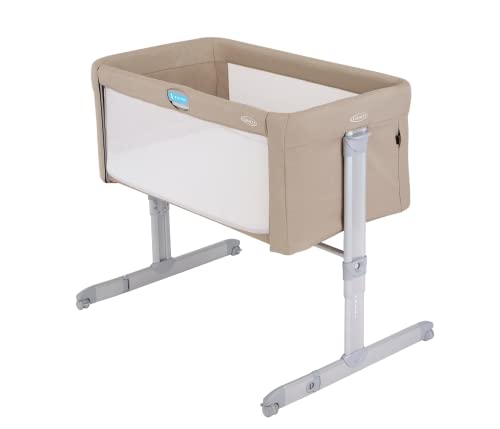How to Choose a Sale Cot
Mortuary Cots are an important piece of equipment used in funeral homes and hospitals. They permit staff to safely and respectfully transport bodies. They also provide a hygienic and comfortable resting area for the body.
COTS items play a critical role in the federal marketplace however they aren't easy to manage. This blog will discuss how COTS items are incorporated into GSA schedules, as well as other regulations governing procurement in the government.
Cost-effectiveness
The use of commercial-off-the-shelf (COTS) products allows procurement agencies to gain efficiencies by purchasing items that are readily available from the marketplace. This reduces development time and lowers life-cycle costs. It also enables procurement agencies to maximize the benefits of technological advances and industry expertise.
It is important to remember that COT designations are subjective, and that different entities will interpret COTS items differently. This could pose a problem for a business that relies on a consistent methodology to calculate government prices accurately. For instance, wholesalers or GPOs often have a list of COT items that does not align with the list used by manufacturers to determine prices for government. A properly documented SOP and a COTS reference library are essential elements to implement an efficient and consistent methodology to assign COTs.
Reliability
A sale cot is an essential purchase for mortuary services. It must be durable and durable enough to withstand the rigors of heavy use. It should be easy to transport and set up. In the event of any issues after purchase, the manufacturer should offer excellent customer service. Also, get feedback from your employees prior to making the final decision. They are the actual users of the cots and can give you an idea of its durability and reliability.
Wholesalers and GPOs typically assign COT designations that do not coincide with the manufacturer's list of COTs. This is due to a number of factors including changing business models, mergers and acquisitions. This makes it difficult to use a subjective lens for evaluating COTS.
Durability
Durability is a major factor for sale cots as they need to be able endure the rigors of frequent use and transport. These cots are used by many funeral homes to display the remains of deceased persons. They must be able to support weight of caskets and other objects. Cots must also be resistant against corrosion and have an easy-to-assemble, stable structure. It is crucial to select a company that provides customer service and can help with any problems that might occur after purchasing.
Solid wooden cots are the ideal option for furniture for babies because they're durable enough to last a long time, and less likely to be contaminated with harmful chemicals or toxic off-gassing unlike composite materials like MDF or chipboard. In addition, they're more attractive than the cheaper alternatives.
The Westport design by Silver Cross is a great option if you want a cot and lounge chair in one. It's made of a sturdy material and has three different height levels for growing babies. The instructions can be confusing but once you've got it figured out the cot will serve your family well.
The Helinox Cot One is the most lightweight cot on the market but it's not as durable as some of the other models we've tested. It's also more difficult to assemble since it comes with a lot of parts. It's a comfortable cot and is a great choice for backpackers. It's also 14 oz lighter than Thermarest Luxury Lite and Sleep Rite.
Safety
If you are supplying cots, you must ensure they meet the safety standard. This is an essential step to avoid accidents and deaths among children. Baby beds can be done by asking your supplier if their products have been tested independently. Request them to supply you with a copy of the results. You can also arrange your own tests.
It is crucial to check the safety of your cot prior letting your baby sleep in it, regardless of whether it's brand new or used. It is also important to be looking for warnings and labels that give information, as well a certificate from the manufacturer. It must also be free of any sharp edges, protrusions or gaps which could cause injury to the child's leg or finger. Additionally, there should be no footholds within the cot that can be used by a child to climb out.
Verify that the mattress of a crib is clean and flat. It should be able to fit comfortably, without gaps. The bottom edge of the rail shouldn't be higher than 30mm from the bottom of the mattress. If the cot's base is adjustable, ensure it is set to the lowest position.
Also, make sure that the slats and filler bars are securely fixed and don't have tiny holes that could trap clothing. There should also be no bolts, nuts or corner posts that extend more than 5 mm that could entangle a child's fingers and cause strangulation. Make sure that the cot isn't in close proximity to drapes or blinds that are loose and could easily be snatched by tiny hands.
Finally be sure to look for a label that indicates that the cot has been tested to the mandatory standards and complies with Australian Standards AS/NZS 2172:2003 Cots for use in households and safety requirements. This is the only way to make sure that the cot you are purchasing is safe and suitable for sleeping. It's illegal for retailers, second-hand shops and antique stores to sell antique cots which don't come with certificates and labels.
Accidents occur, even though manufacturers and designers strive to make sure that their products are safe. Older cots that have been used by children of other ages may not meet current safety standards, and they can pose risks of suffocation, strangulation, or ingestion of foreign bodies.

